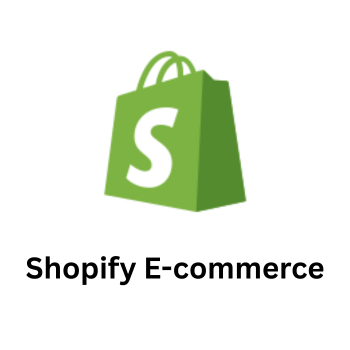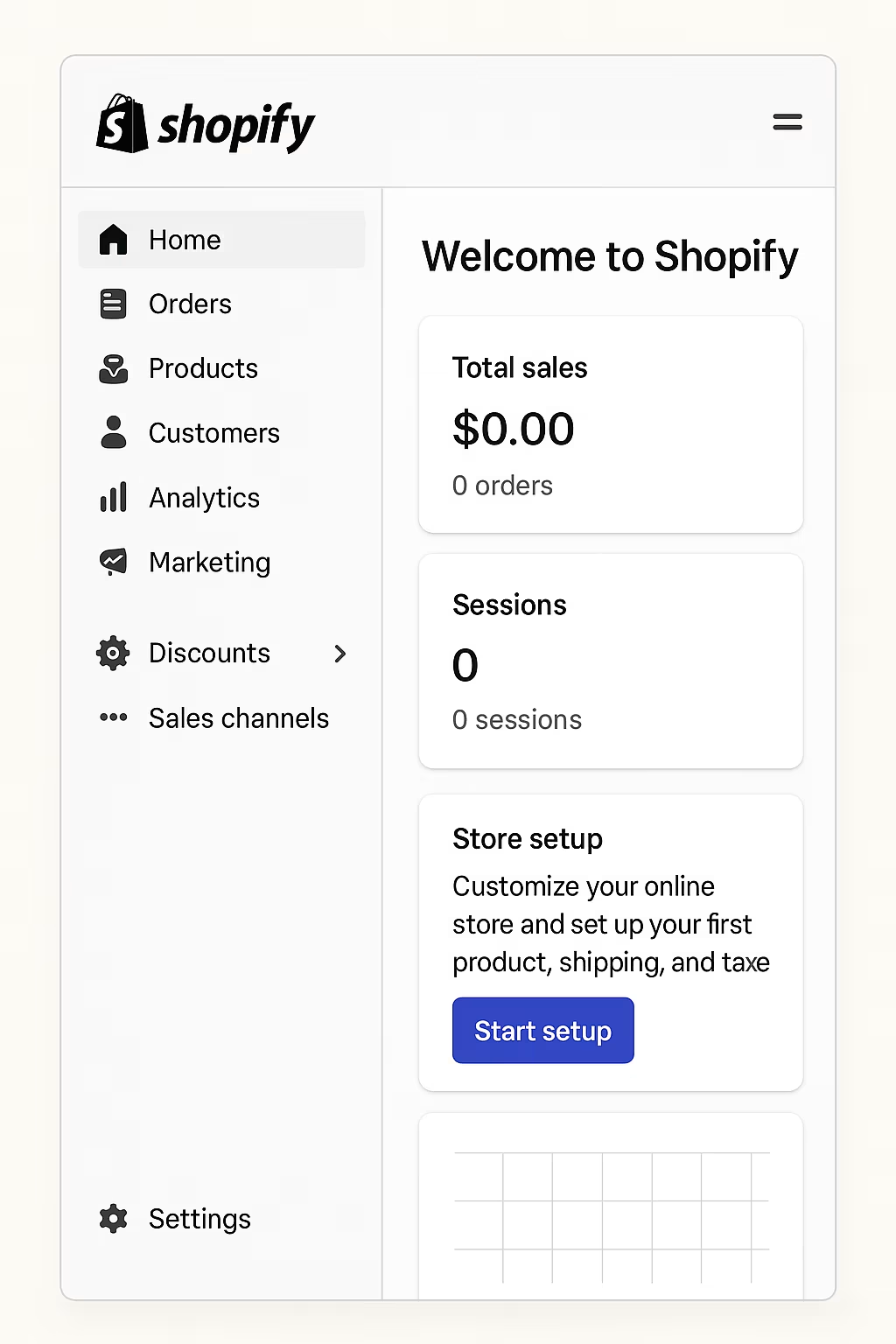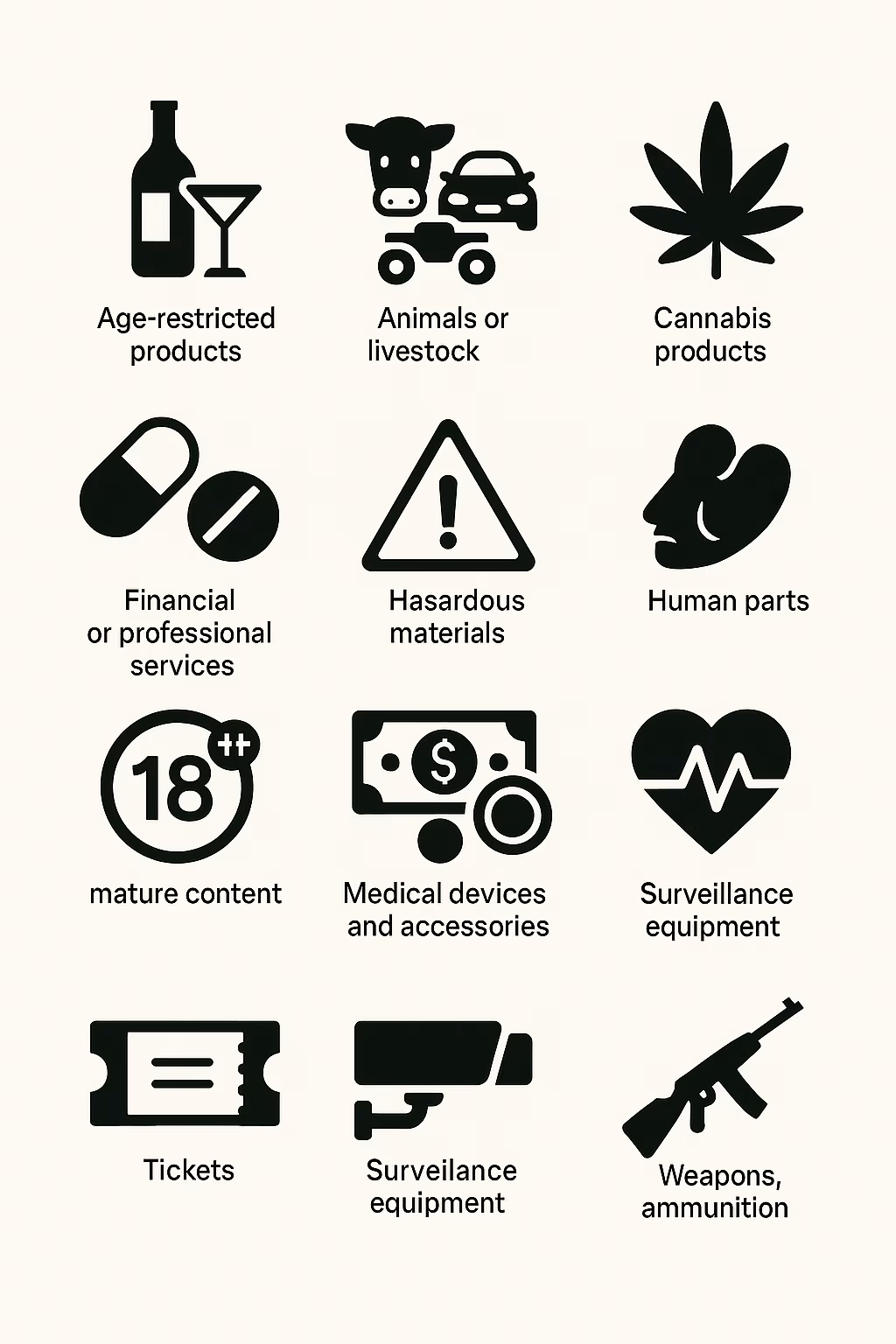Home > software_development > Shopify Storefront for E-commerce: All You Need to Know.
Shopify Storefront for E-commerce: All You Need to Know.
Shopify is designed with beginners in mind. Its user-friendly interface means you don't need to be a tech guru to get started.
By :Thomas Inyang🕒 4 Jun 2025

Introduction
Ever scrolled through Instagram and thought of selling a product you saw and liked, Or maybe you have a good product idea but have no clue on how to start selling it? I was once in those shoes.
E-commerce is growing fast every day and marketers are making sales daily, weekly, and yearly on Shopify.
By the end of this post, you'll be armed with the following knowledge:
- What an E-commerce is.
- High-demand product ideas in Shopify.
- Why you should choose Shopify.
- How to set up your storefront on Shopify.
- Frequently asked questions about Shopify (e-commerce) with answers.
What is E-commerce?
It is to sell products or services that are accessible to anyone online, instead of a physical storefront.
Why go e-commerce? As a business owner, the advantages are huge:
- Lower rents and utility bills than a physical store.
- Global Reach & 24/7 Sales: Your store is always open at all time to customers across the globe.
- Scalability: Your online store can grow often without needing a bigger physical space.
- Data & Personalization: Insights on customer behavior, allowing you to tailor marketing and offers.
E-commerce Business Ideas on Shopify.
The best product or service ideas often come from identifying a need or a passion. Here are some profitable niches and real-world examples:
- Sustainable/Eco-friendly Products: Reusable household items, ethical fashion, or upcycled goods.
- Personalized/Customizable Goods: Customized clothes, engraved jewelry, or bespoke art.
- Health, Wellness & Beauty: Organic skincare products, fitness equipment and supplements.
- Pet Supplies: Specialized food, unique toys, and stylish accessories.
- Digital Products: E-books, online courses (like "Which course is best for dropshipping?"), printables, or design templates.
Some Successful E-commerce Examples (Powered by Shopify)
- Gymshark: Started as a small fitness apparel brand and exploded into a global phenomenon.
- Allbirds: Revolutionized the shoe industry with sustainable, comfortable footwear.
- KYLIE: Kylie Jenner cosmetic store.
Why Choose Shopify for E-commerce?
I chose Shopify for my business because it beats other platforms with the following:
- Ease of Use for Beginners: You can drag and drop without having to write a single line of code for a basic setup.
- Comprehensive Features: Shopify is an all-in-one solution that handles everything from payment processing, and inventory management to shipping and basic marketing tools.
- Scalability: It can handle a high volume of traffic as it is designed to grow with your business, from a tiny startup to a massive enterprise (with Shopify Plus).
- Reliability and Security: Shopify takes care of server maintenance, security updates, and SSL certificates (that little padlock in your browser). With this, your customer's data is safe.
- Global Reach & Local Support: Shopify supports multi-currency selling and offers tools for international shipping. And yes, Shopify works in Nigeria other African countries, and many other countries, allowing local businesses to tap into both domestic and international markets.

How to Make an E-commerce Website in Shopify (Step-by-Step)
Shopify is designed with beginners in mind. Its user-friendly interface means you don't need to be a tech guru to get started and they offer fantastic deals like a 3-day free trial, followed by $1/month for your first three months. This gives you plenty of time to set things up without a big commitment. Just go to Shopify's website and click "Start free trial."
With the Following steps, you should be able to set up and run your online storefront faster than you think
1. Sign Up for a Shopify Free Trial and Set Up Your Basic Store:
- Choose a store name: Make it catchy and relevant to your niche!
- Add your address and business information: This is for tax and legal purposes.
2. Add Products:
- Go to "Products" in your Shopify admin.
- Click "Add product."
- Fill in all the details: Product title, a compelling description (sell the benefits!), high-quality images (crucial!), pricing, and inventory (how many you have).
- If your product comes in different versions (like sizes or colors), use variants.
- Organize your products into collections (e.g., "Men's T-Shirts," "Summer Collection") to make Browse easy for customers.
See Also: Google Veo 3 AI for Video Content Creation.
3. Design Your Store (No Coding Needed!):
- Go to "Online Store" > "Themes."
- Select a theme: Shopify offers a range of free themes (like the popular Dawn theme, which is excellent and mobile-friendly) and paid themes. Start with a free one; you can always upgrade later.
- Customize! Click "Customize" next to your theme. This is where the magic happens. You can drag-and-drop sections, change colors, and fonts, add images, and arrange your homepage layout.
- Best practices for e-commerce website design: Focus on a clean user experience (UX), ensure your site looks great on mobile phones, use clear calls to action (like "Shop Now!"), and invest in professional-looking visuals.
4. Configure Essential Settings:
- Shipping rates and zones: Decide where you'll ship and how much to charge. You can set up flat rates, free shipping, or calculated rates.
- Taxes: Set up your tax rates based on your location and where you're selling.
- Payment gateways: This is how you get paid! Shopify Payments is usually the easiest option, but you can integrate others.
- Domain name: While Shopify gives you a free yourstorename.myshopify.com address, I highly recommend buying a custom domain (e.g., yourstore.com) to look more professional. You can buy one directly through Shopify.
5. Launch Your Store: Once everything is set, remove the password protection from your store (under "Online Store" > "Preferences") and do a final test purchase to make sure the checkout process is smooth!
FAQ Shopify E-commerce:
Is Shopify Profitable
The Shopify platform can be very profitable! But it's not a "set it and forget it" or "get rich quick" scheme. Here is why
1. Average revenue and profit margins vary wildly by niche and product. Many successful e-commerce businesses aim for a 10-20% profit margin after all expenses (product cost, shipping, marketing, platform fees).
2. Factors Influencing Profitability:
- A niche with lower competition, high demand, and good profit margins is key.
- Offering great products at competitive but profitable prices.
- How well you acquire customers for a low cost (Customer Acquisition Cost - CAC) versus how much they spend over time (Customer Lifetime Value - LTV).
- Streamlined shipping, easy returns, and efficient inventory management save money.
- Happy customers are repeat customers, which boosts LTV.
See Also: Claude 4 Models, Tools, and Development Workflows (2025)
Making money in Shopify can be very fast. I have seen some people make their first sale within days or weeks, especially with dropshipping; for others, it can be months. In summary, making it fast truly depends on the effort you put into marketing, the demand for your product, and how quickly you learn and adapt.
How Does Shopify Pay You? How Do I Withdraw Money from Shopify?
Shopify pay store owners through their payment providers (Shopify Payment, Apple Pay, Amazon Pay, Google Pay, PayPal Wallet, etc)
How to Sell with Shopify (Beyond Setup).
Having a great-looking store is just the beginning. To truly sell with Shopify, you need to master these areas:
1. Product Sourcing:
- Find suppliers on platforms like AliExpress, SaleHoo, or Printful (for print-on-demand) when considering Dropshipping.
- Buy products in bulk from manufacturers or distributors.
- Design your graphics for T-shirts, mugs, etc., and a service prints and ships them when ordered.
- If you create your products, that's your sourcing!
2. Marketing and Sales Channels: This is where your store gets discovered!
- SEO (Search Engine Optimization): Make your product pages and blog content rank high on Google for relevant search terms.
- Connect your Shopify store to Facebook and Instagram for shoppable posts and ads.
- Build an email list and send newsletters, promotions, and abandoned cart reminders.
- Paid Advertising: Facebook Ads, Instagram Ads, and Google Ads can drive targeted traffic.
- Create valuable blog posts, guides, or videos related to your niche.
See Also: Computer Booting: Everything You Need to Know.
3. Customer Service and Order Fulfillment:
- Promptly answer customer questions.
- Ensure efficient and transparent shipping processes.
- Handle returns gracefully. Good customer service builds trust and repeat business.
What Are You Not Allowed to Sell on Shopify?

Shopify has a strict Acceptable Use Policy to ensure a safe and legal platform. You cannot sell the following as violating them can lead to your store being shut down:
- Illegal Activities: Anything illegal in your jurisdiction or Shopify's.
- Adult Content: Pornography, sexually explicit material.
- Certain Firearms & Weapons: Including dangerous regulated products.
- Drugs & Drug Paraphernalia: Illegal drugs, prescription drugs without proper licensing, and tools for drug use.
- Hate Speech & Discriminatory Content: Anything promoting violence, discrimination, or hate towards any group.
- Counterfeit Goods: Knock-offs or fake branded items.
- High-Risk Financial Services: Certain debt collection, credit repair, or pyramid schemes.
Always check Shopify's policy and local laws before selling.
Can You Sell on Shopify Without Money?
Starting with absolutely zero money is tough, but you can start with very little by doing the following:
1. Bare Minimum Costs: The $1/month introductory offer is practically "without money."
2. Lean Startup Approach:
- Dropshipping: You don’t need buy inventory upfront, your main costs are the Shopify subscription and potentially a domain name.
- Print-on-Demand: products are only created once an order is placed.
3. Free Marketing Strategies: Focus heavily on organic social media marketing (Instagram, TikTok, Pinterest), search engine optimization (SEO), and leveraging word-of-mouth.
Scaling Your Shopify Business
1. Shopify Partner Program: It is for agencies, developers, designers, and marketers who help merchants build and grow their stores. If you're great at designing stores or developing apps, you can become a partner and earn revenue by helping others use Shopify.
2. Managing Multiple Stores on Shopify: Yes, you can have multiple stores on Shopify,operate them independently, and requires its own Shopify subscription plan.
Conclusion
The key takeaway? Shopify is an incredibly powerful, user-friendly platform that empowers anyone, even a business owner like me, to launch and grow a successful online store.
Remember, building an e-commerce business isn't just about setting up a website; it's about identifying a need, offering valuable products, and consistently marketing your brand. It takes persistence, continuous learning, and a willingness to adapt.
So, what are you waiting for? The world of e-commerce is brimming with opportunities. Take that idea you've been sitting on, sign up for your Shopify trial, and start building your online empire.
Please Share